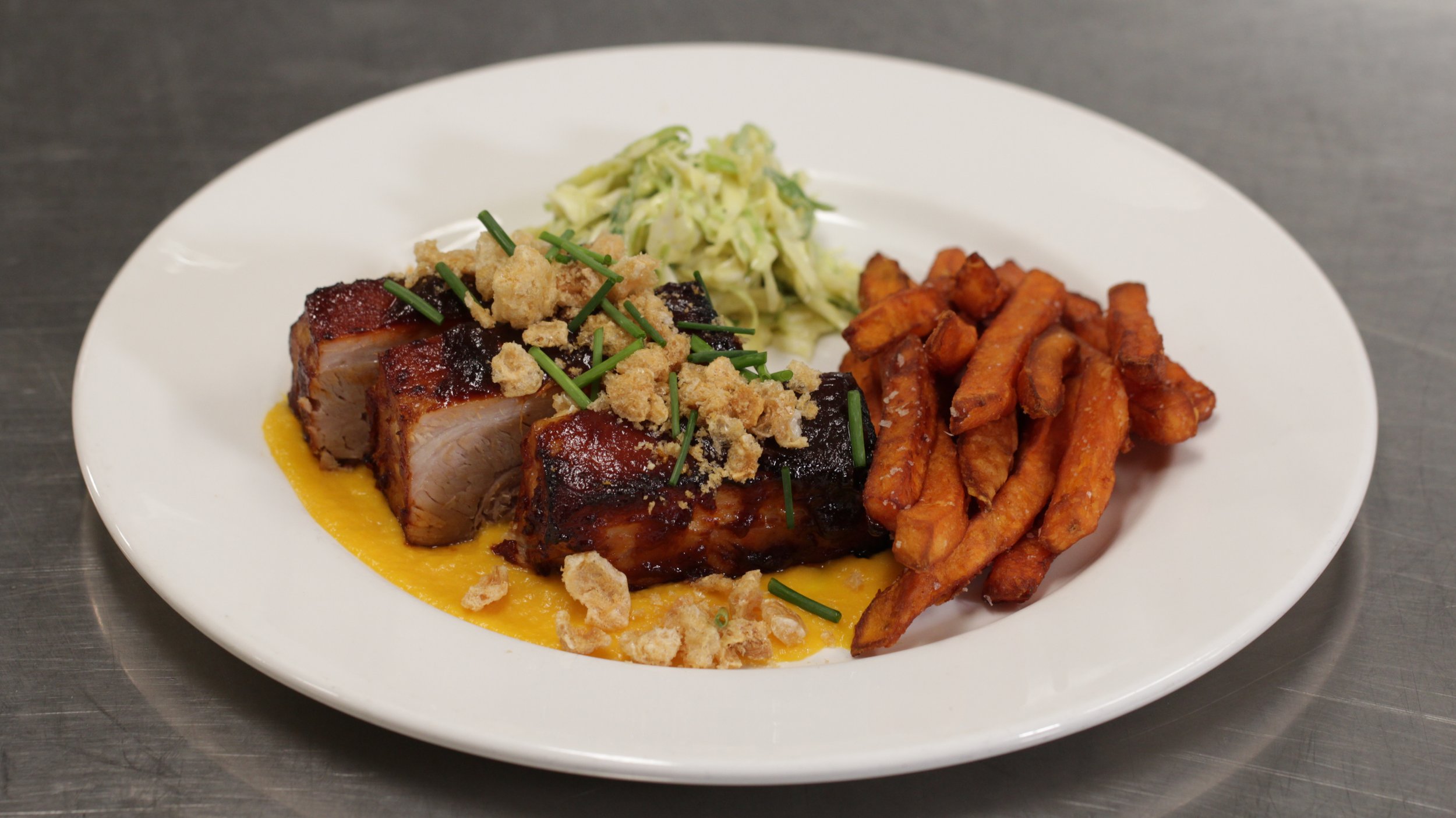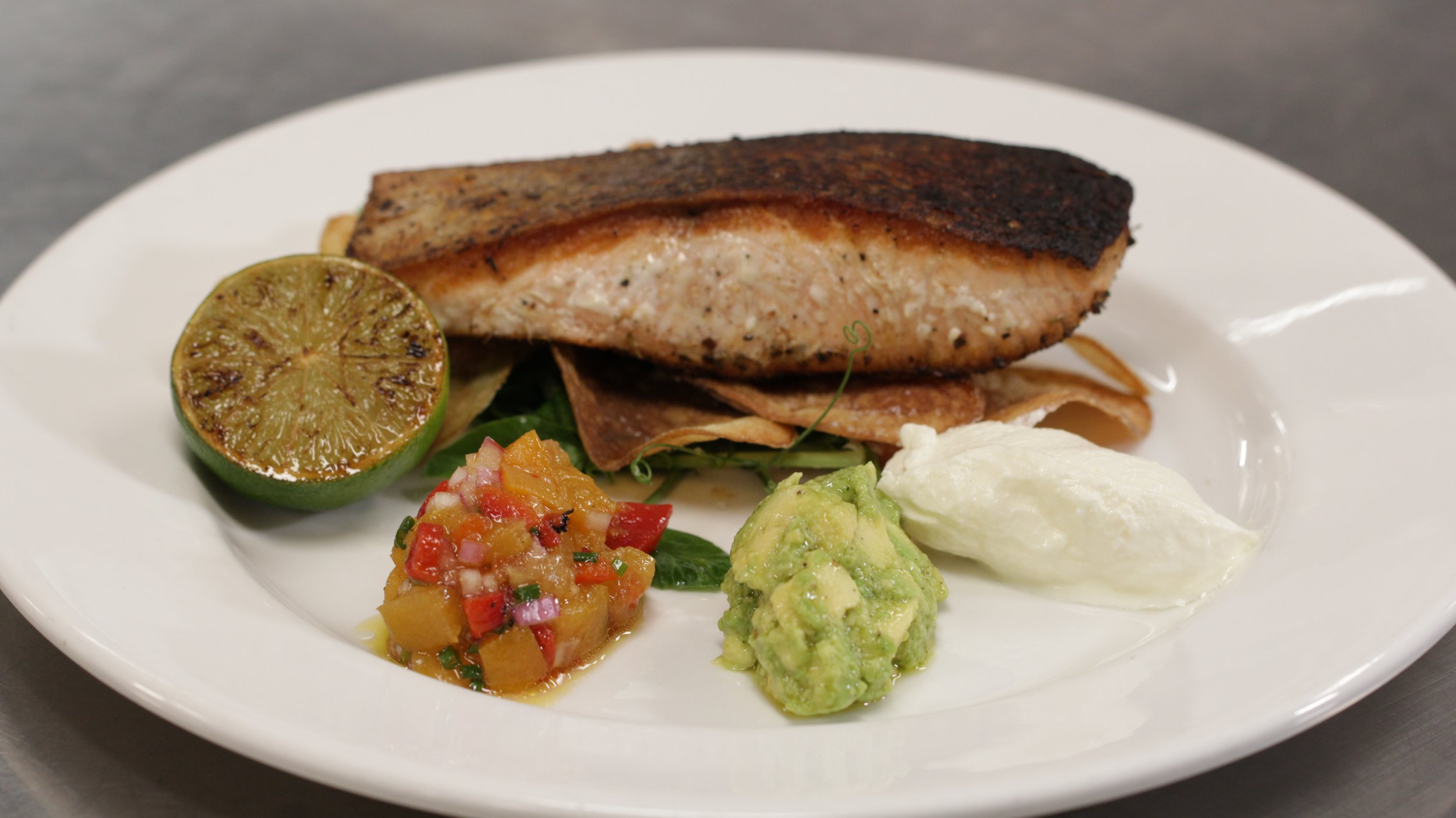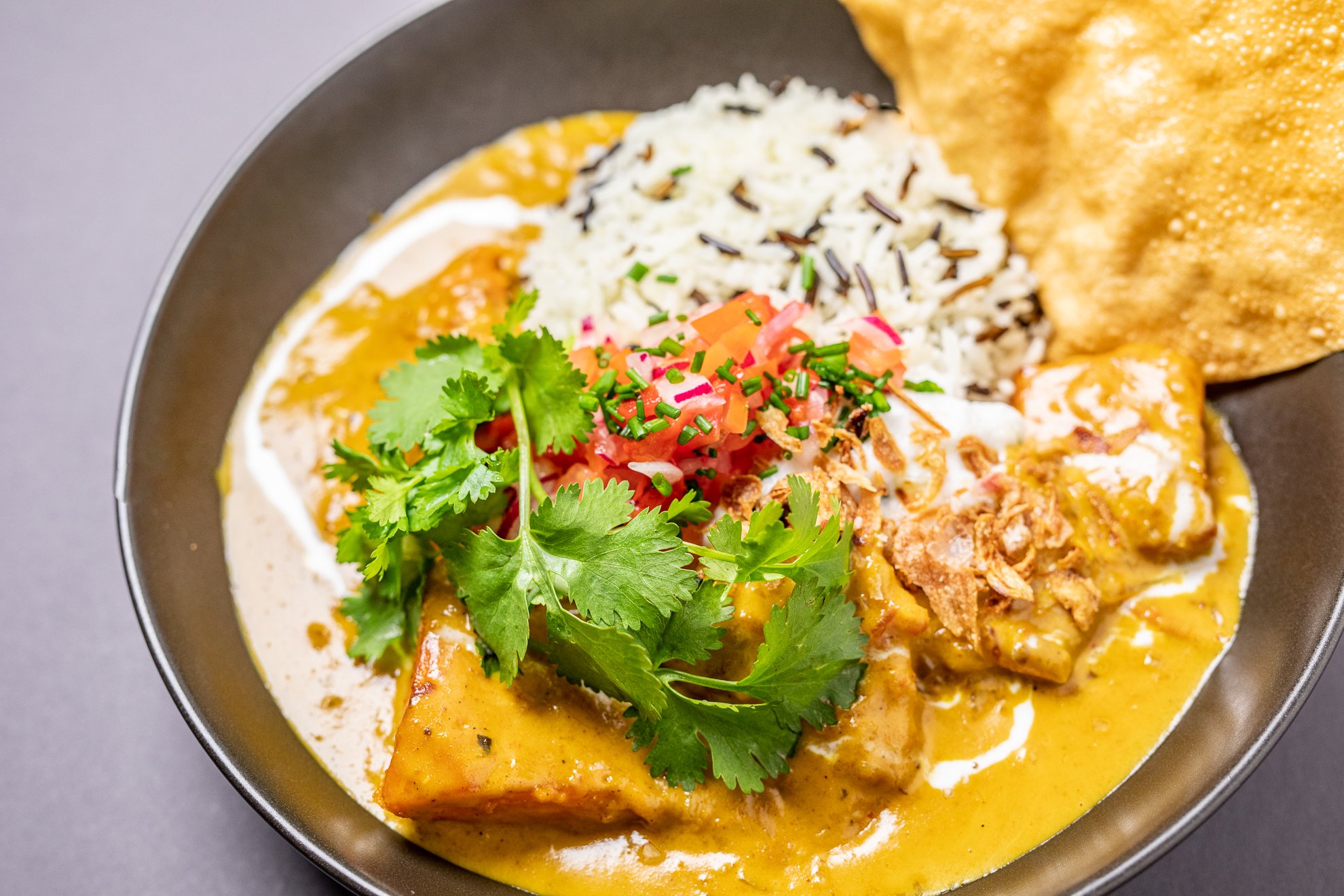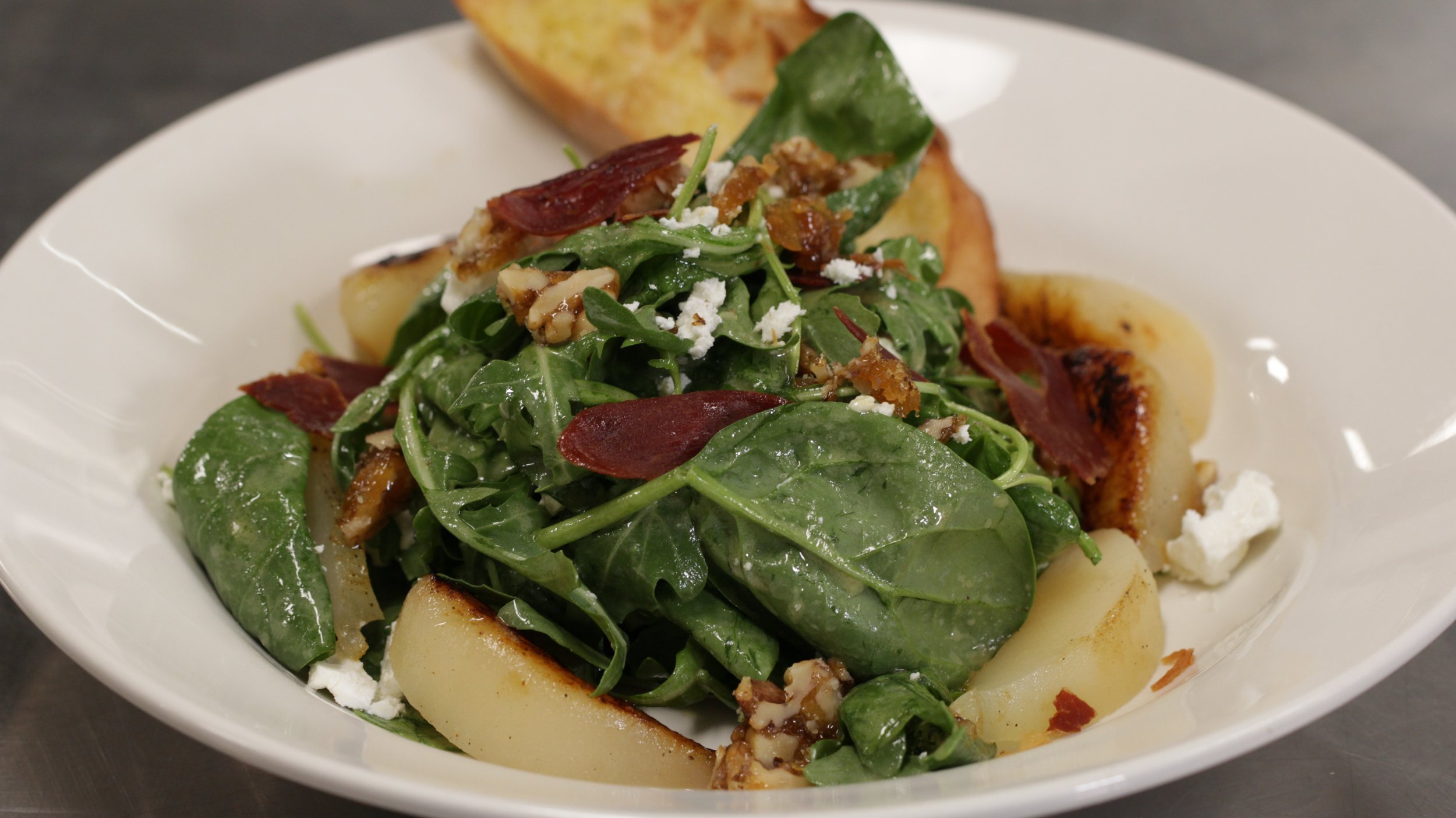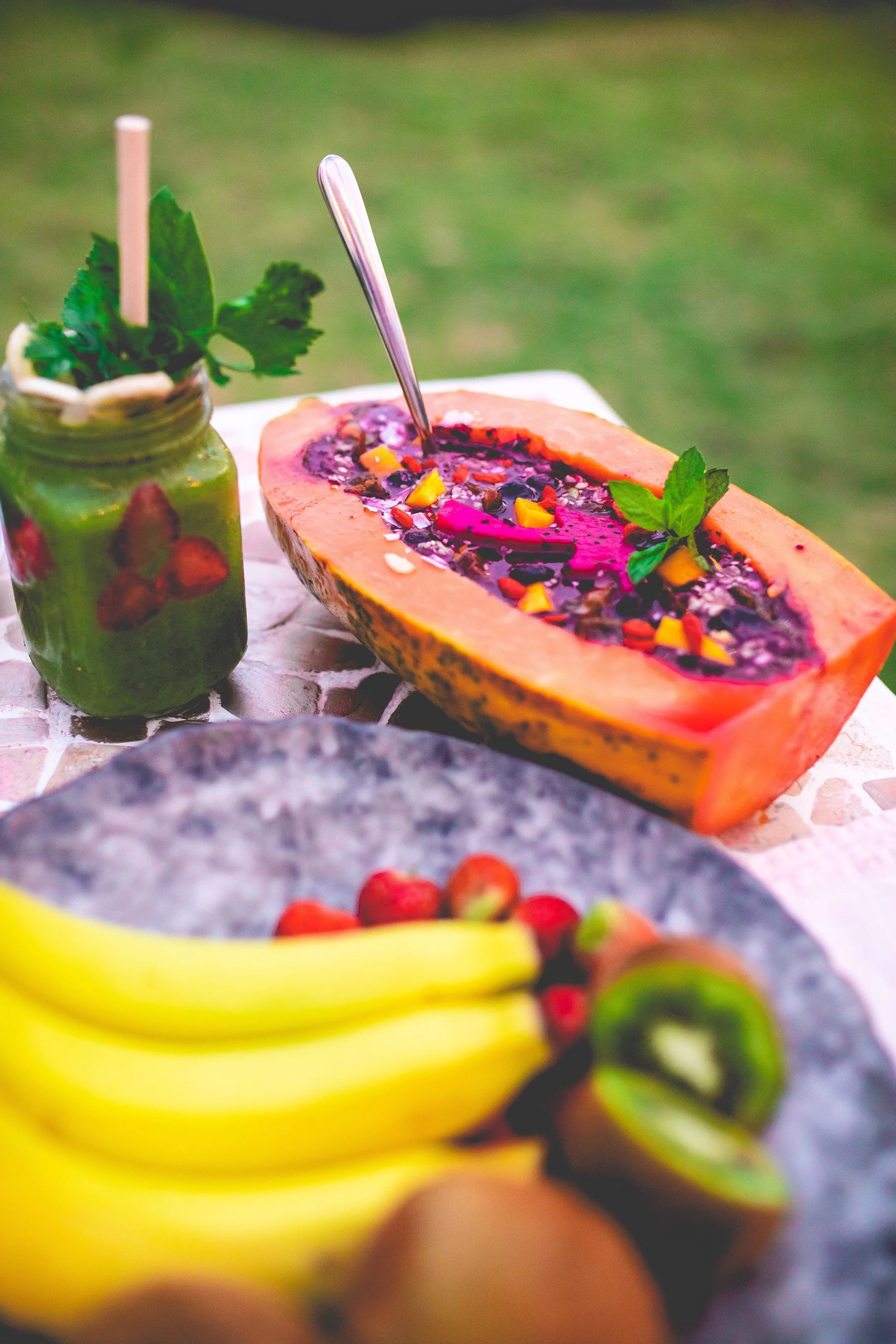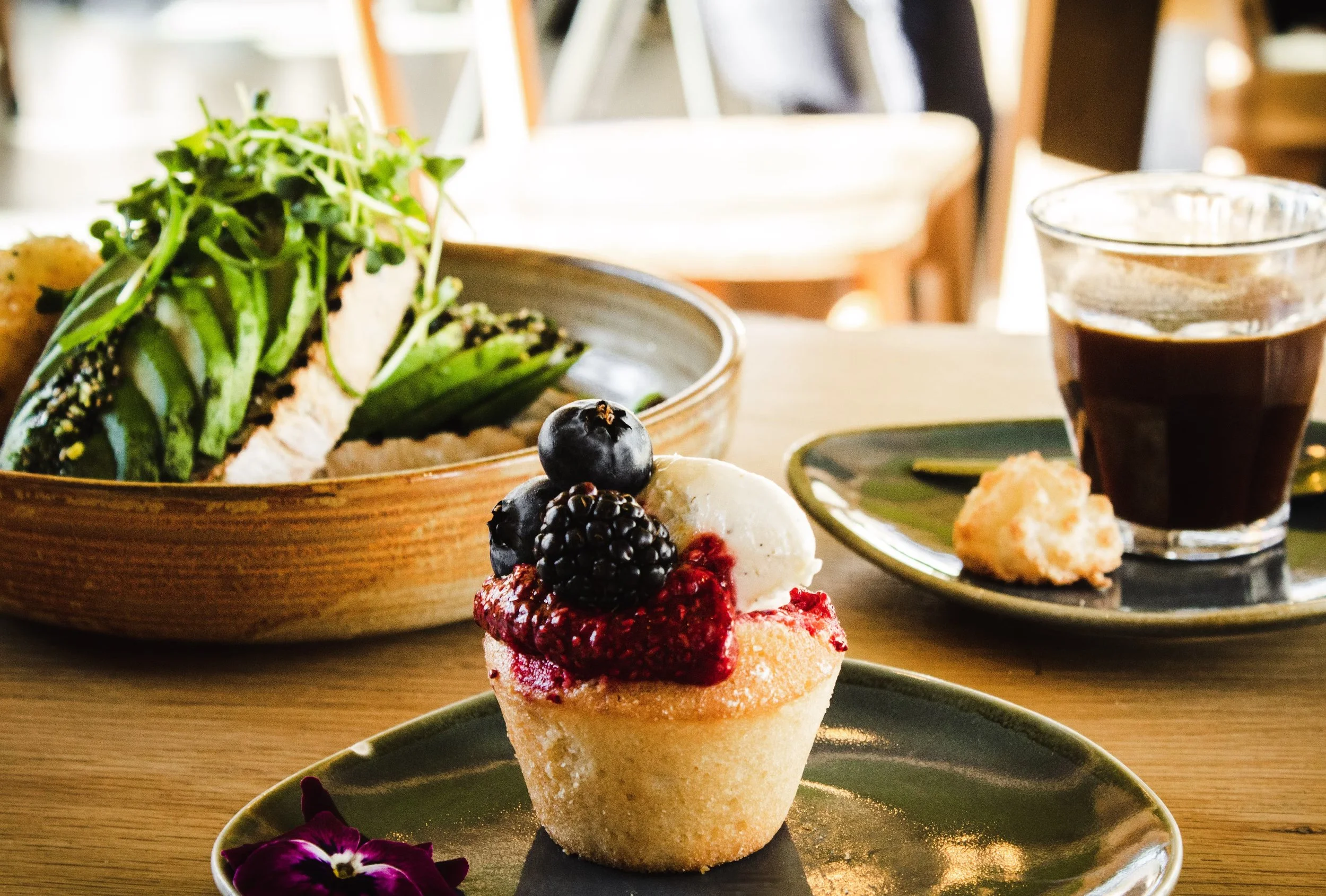Fruit-based dishes can give your menu presentation ‘wow factor’
It’s no secret – fruit is often the key to memorable presentation and great meals which will keep your customers coming back.
This is the case across both sweet and savoury items, but of course most people immediately associate fruit with sweets. And particularly in the desserts category, where colourful ‘Instagrammable’ dishes which deliver on flavour and mouthfeel are the biggest sellers, fruit can be the chef’s secret weapon.
“Fruit has always been a key ingredient in desserts, baking and pastry and the current demand for plant-based meals is helping to drive more fruit onto the menu,” acknowledges Emily Gorscak, Trade Marketing Executive at SPC Food Solutions, one of the major fruit suppliers to the foodservice sector.
“In creating delicious, memorable desserts and baked goods, presentation and taste is always key”
“Remember that in creating delicious, memorable desserts and baked goods, presentation and taste is always key – and the experience of taste is not just about flavour, it’s also about texture. Customers are looking for contrasting textures at these meal occasions – bite, crunchiness and smoothness go well together and help create a balance that delivers overall satisfaction and that ‘wow moment’.
“Fruit is an ideal ingredient to add both colour and texture to these dishes, while the syrup in packaged fruits makes a terrific natural flavour enhancer. Thanks to the extensive range of quality fruit that SPC makes available in packaged form, you don’t have to worry about seasonal availability – you can have your pick of the best fruit Australia has to offer all year round.
“Our fruit is expertly processed and packaged and comes from the Goulburn Valley – one of Australia’s most fertile areas with abundant sunlight and the benefit of irrigation. It’s hand-picked and handled with care, with all our growers certified by a rigorous independently audited environmental assurance program.”
Emily adds some of the most enduring flavour profiles in dessert and pastry include contrasting sweet with sour or bitter – hence the rise of such flavours as salted caramel – and quirky modern twists on traditional favourites, such as marrying beetroot with chocolate.
“In keeping with the increased diversity and expectation of today’s foodservice consumer, there’s also an ever-increasing use of herbs and spices that provides a wider flavour complexity. Another consistently emerging dessert trend is the use of Asian style flavours and ingredients, such as a green tea ice cream, sesame praline and ginger syrup.
“Chefs and cooks also need to bear in mind the growing demand among diners for healthier dessert options, and consequently it can be an advantage to take a close look at fats, sugar, sodium and kilojoules per serve,” she recommends.
Recipes from fruit are “virtually endless”
Gary Johnson, National Executive Chef for ALH Group, says the recipes you can develop from fruit are virtually endless. “Fruit is in fact extremely versatile and works just as well to add some sweetness and tartness to savoury dishes as it does with sweets.
“Just think about a great pork rib with pickled peaches and shaved crackling – thanks to the fruit you have a little sweet sharp flavour in this wonderful sticky rib that has been barbecued and caramelised. The other classic example is mango in curry – I do a vegan mango red onion curry which is to die for! Or how about sand crab and watermelon with ginger and lime dressing?”
When it comes to ‘wow factor’ in fruit based dishes, Gary says clever combos are what’s important.
“You should always be looking to get the balance right – for example pairing caramelised roast pears with a really flavoursome blue cheese and some watercress, topped with a honey and cherry vinaigrette. In that example you have harmony in taste, textures, colours and layering – food for all the senses.”
“I think sometimes as chefs we try too hard – why not just let the fruit be the hero?”
As we head into the warmer months, there’s no better time to take advantage of seasonal availability when it comes to your fruit choices. “Who could go past the quintessential Aussie pavlova with kiwi fruit, passionfruit and strawberries – you can actually add any fruit to it, from mixed berries to pineapple to mangoes and lychees. You’re actually only limited by your imagination in this space and I think sometimes as chefs we try too hard – why not just let the fruit be the hero?
“I love a nice red paw paw, served simply with some fresh lime juice and natural yoghurt. Those kinds of dishes speak for themselves. Really ripe, well grown, fresh seasonal products are wonderful as long as they’re picked in peak condition. They don’t have to be unblemished either, just really well grown, tasty and picked at the top of the season. The cape gooseberries that come out of Stanthorpe this time of year are a terrific example – they’re just delicious and make wonderful pies. Nothing beats an apple and cape gooseberry pie with a dob of crème fraiche on the side; again, the fruit is the hero.”
Fruit an ideal ingredient for meal value-adding
Chef Peter Wright affirms seasonal availability plays an important role in the value of fruit but adds, “I can buy Californian cherries cheaper right now than I can Australian cherries in December. There are supply chain fluctuations but as a general rule seasonality will give you the best value.
“Fruit is typically inexpensive which makes a great choice in value-adding to meals and now that we’re moving to more and more plant-based meals, fruit is really a no-brainer. From a side serve of fruit salad with eggs and toast for breakfast, to grilled pineapple and peaches, a fruit compote served with porridge – it’s all value adding.
We tend to use sides a lot for main courses, but not so much of it is fruit, so there’s a good opportunity to fill a niche right there.”
“Dehydrated fruit is also trending now as garnishes as opposed to fresh, because you can do it ahead of time”
Fruit purees are another simple menu addition which can add much in the way of both flavour and colour. “You can buy in terrific readymade purees where all the prep’s been done for you, they come in a pouch and they’re perfect for garnishing plates, flavouring sauces – and of course with the explosion of chilled drinks in cafes, where people are now happy to pay $5 for a coffee with ice cream, you also adds fruit puree to beverages. They provide great visuals when you serve them in big glasses and particularly in the café environment, eye appeal is so important – customers see something being served to someone else and say, ‘what was that, I’ll try it’. So I think fusing fruit with beverages can add a lot of value.”
Peter also suggests using leftover fruit to make your own purees which you can freeze and then serve for garnishes. “Dehydrated fruit is also trending now as garnishes as opposed to fresh, because you can do it ahead of time, there’s no wastage and it looks so appealing.”
Fruit is also trending on the premium end of the menu, as chef Adam Moore points out. “From highly attractive fruit-based pates which use grape jellies, to the use of dried fruits in roasts, such as chopped apricots and dates in roast chicken. Fruit is a great choice as an alternative to sugar – I saw magnificent dish recently, which was duck served with cherries. More simple dishes like apricot chicken are also coming back on the menu.”
Experiment with flavour pairings
Adam recommends experimenting with flavour pairings: “Different fruits have different flavour profiles and it’s a question of which ones complement other flavours best. For example, bananas and strawberries pair much better with savoury foods than they do sweets. Strawberries and mussles are a good flavour pairing because they have similar notes. Indian food traditionally uses banana, mango and apricot in adding flavour and texture to curries – banana in particular has a lot of fibre. It’s all about combining the hot, salty and sweet to create that umami.”
“Fruit plays an important part in adding flavour to savoury dishes in particular”
Another effective use of fruit is to make glazes from them or use them to enhance other ingredients – “like tossing cranberries through brussels sprouts and pecans. You get a fantastic flavour burst, plus the nuttiness of the pecan to complement the strength of the brussels sprout. You can also use something like Verjuice, which is fermented grape guice, to complement red meats. Fruit plays an important part in adding flavour to savoury dishes in particular – it breaks down during roasting, and the sugars impart a natural balance to your proteins and complex carbs.”




